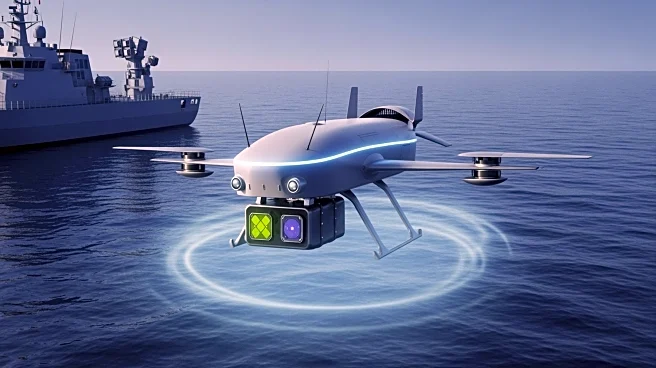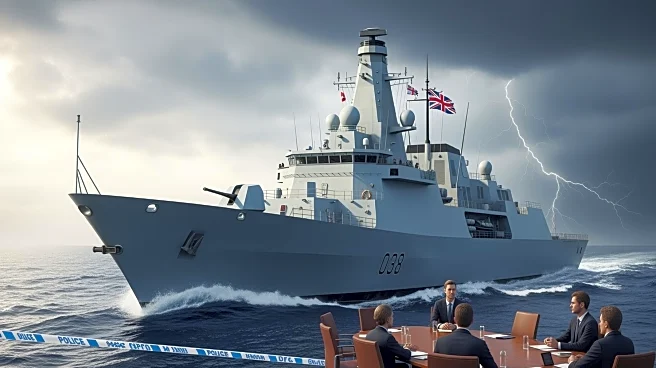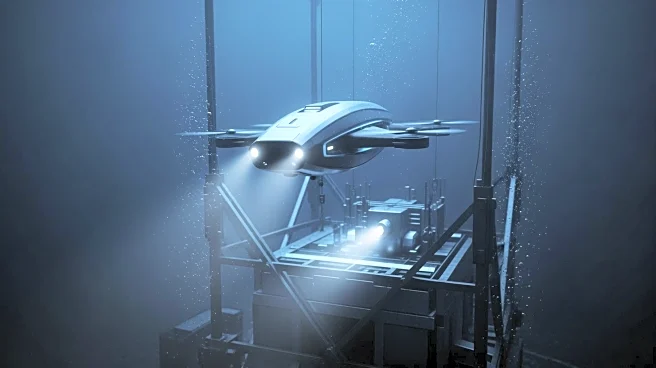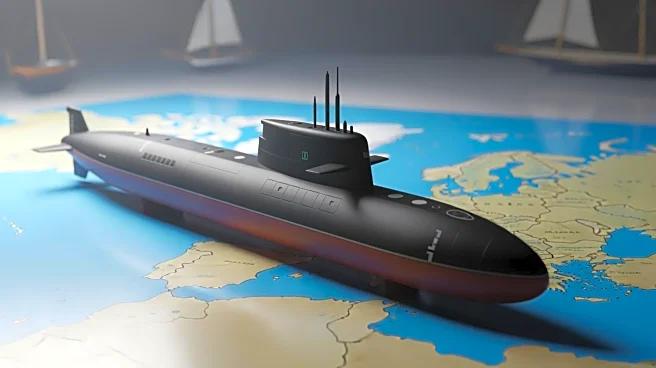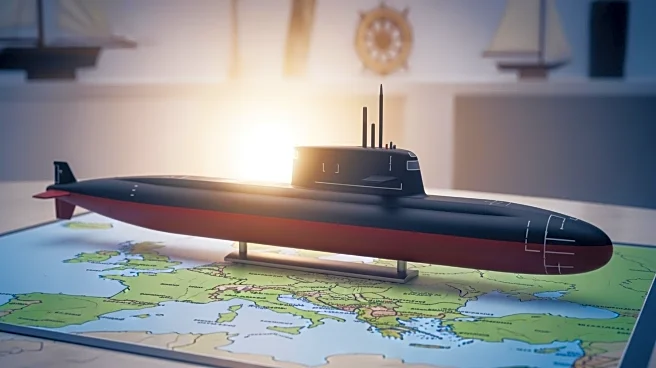What's Happening?
The Royal Navy has commenced trials with the repurposed PSV, HMS Stirling Castle, which was acquired from the Royal Fleet Auxiliary (RFA) and converted to support mine hunting missions. Originally built
as an offshore support vessel named MV Island Crown, the ship was purchased by the UK government in 2023 for $50 million from Island Offshore. After undergoing conversion at HM Naval Base Devonport, the vessel is now equipped with high-tech autonomous surface and underwater vehicles for mine hunting operations. The ship's crew, along with RFA personnel, have completed essential maintenance, safety checks, and training over the past four months to prepare for its new role. HMS Stirling Castle is expected to significantly enhance the Royal Navy's mine hunting capabilities, primarily in UK waters.
Why It's Important?
The repurposing of HMS Stirling Castle marks a strategic shift in the Royal Navy's approach to mine hunting, moving away from traditional methods to incorporate advanced autonomous systems. This development is crucial for maintaining maritime security and protecting vital shipping lanes around the UK. The integration of cutting-edge technology into naval operations reflects broader trends in military modernization and the increasing reliance on autonomous systems. The successful deployment of HMS Stirling Castle could set a precedent for future naval operations, potentially influencing defense strategies and procurement decisions. The enhancement of mine hunting capabilities is vital for national security, ensuring safe passage for commercial and military vessels.
What's Next?
HMS Stirling Castle will undergo further operational sea training later this year, including exercises with its autonomous vehicles. The Royal Navy plans to repaint the vessel in gray, aligning with the traditional color scheme of its fleet. As the ship becomes fully operational, it will play a key role in safeguarding UK waters from mine threats. The trials and assessments will determine the effectiveness of the new systems, potentially leading to broader adoption of autonomous technologies in naval operations. Stakeholders, including defense contractors and technology developers, will be closely monitoring the outcomes to assess future opportunities in military innovation.
Beyond the Headlines
The transition to autonomous mine hunting systems raises ethical and operational questions about the role of human oversight in military operations. The reliance on technology for critical defense tasks could lead to discussions on accountability and the potential risks associated with autonomous systems. Additionally, the repurposing of commercial vessels for military use highlights the evolving nature of naval logistics and the importance of adaptability in defense strategies. This development may influence international naval practices, encouraging other nations to explore similar technological advancements.
